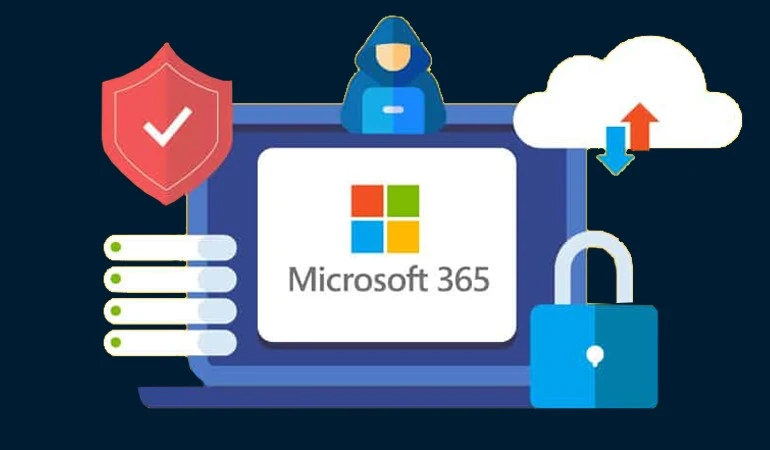In today’s digital age, regulated industries such as healthcare, finance, and government face growing pressure to comply with strict data protection and regulatory standards. With rising threats and evolving laws, maintaining compliance is no longer optional it’s a necessity. Microsoft 365 offers a robust suite of compliance tools designed to help organizations navigate this complex landscape effectively. From data classification and information governance to insider risk management and advanced auditing, Microsoft 365 equips compliance teams with the tools they need.
As businesses in regions like the UAE work towards secure digital transformation, solutions like Microsoft Intune Services Dubai play a critical role in managing devices and enforcing compliance policies, especially for mobile and remote workforces.
Why Compliance Matters in Regulated Industries
Organizations in regulated sectors are bound by numerous laws and standards HIPAA in healthcare, PCI-DSS in finance, and GDPR or national data protection laws for general data handling. Failing to meet these requirements can result in significant legal consequences, financial penalties, and loss of reputation.
What makes compliance even more challenging is the growing volume and complexity of data. With employees collaborating across borders and devices, having centralized, automated tools to manage compliance is essential.
Overview of Microsoft 365 Compliance Tools
Microsoft 365 provides a unified platform that integrates security, compliance, and identity capabilities. Some of the standout compliance features include:
1. Compliance Manager
Microsoft Compliance Manager helps assess compliance risks and provides actionable insights to improve your compliance posture. It supports over 300 regulatory templates, including ISO 27001, GDPR, NIST, and more.
2. Information Protection
This feature uses sensitivity labels and data classification to ensure that sensitive content is automatically protected. You can enforce rules such as encryption, content marking, or access restrictions based on the label assigned.
3. Insider Risk Management
Microsoft 365’s insider risk management solution uses machine learning to identify and address risky user behavior—helping prevent data leaks and insider threats.
4. Data Loss Prevention (DLP)
DLP policies in Microsoft 365 allow organizations to monitor and restrict the sharing of sensitive information like credit card numbers, personal identification numbers, or health records.
5. Advanced eDiscovery
This tool simplifies the legal process of identifying, collecting, and analyzing electronically stored information (ESI) for investigations or legal matters.
6. Communication Compliance
Helps monitor employee communications across Microsoft Teams, email, and other collaboration tools to detect policy violations and ensure ethical conduct.
Integration with Security Tools
Microsoft has designed its compliance tools to work seamlessly with its security offerings. One major advantage of Microsoft 365 is its close integration with Microsoft Defender Suite Services Dubai, which provides protection against malware, phishing, and advanced persistent threats. These integrated services ensure that your compliance strategy includes not just governance but also active threat prevention and response.
Custom Compliance Scenarios and Industry Solutions
Microsoft 365 supports custom compliance scenarios, making it a flexible option for a range of regulated sectors:
- Healthcare: Ensures HIPAA compliance by protecting patient health information (PHI) and enabling audit trails.
- Finance: Helps meet FINRA and PCI-DSS requirements with advanced DLP, audit logs, and customer lockbox features.
- Government: Offers solutions certified for FedRAMP and other government security frameworks to ensure secure data storage and communication.
Additionally, with Microsoft Integration Services Dubai, businesses can extend the capabilities of Microsoft 365 by connecting it with other enterprise tools such as ERP, CRM, or industry-specific platforms. This enables a more holistic compliance framework across the organization.
Compliance Reporting and Audit Capabilities
Transparency and accountability are essential for any compliance strategy. Microsoft 365 offers robust reporting and auditing tools that provide detailed logs of user activity, data access, and policy enforcement. These reports not only help in preparing for audits but also support internal compliance monitoring.
Microsoft’s Purview Compliance Portal serves as the command center, offering centralized visibility into compliance scores, active alerts, and improvement recommendations. By automating much of the monitoring process, organizations can stay ahead of potential issues before they become liabilities.
Ease of Use and Automation
Despite the complexity of compliance, Microsoft 365 tools are designed to be user-friendly. Compliance templates, automation rules, and guided assessments reduce the manual workload of IT and compliance teams. This efficiency allows organizations to focus more on strategic governance rather than administrative tasks.
Conclusion: Building a Secure and Compliant Future
For organizations operating in heavily regulated sectors, staying compliant is not just about avoiding penalties—it’s about building trust with customers, partners, and regulators. Microsoft 365 compliance tools offer a comprehensive, integrated approach that empowers organizations to manage risk, secure data, and demonstrate accountability.
Whether you’re a healthcare provider looking to protect patient data, a bank aiming to secure financial records, or a public sector organization enhancing transparency, Microsoft 365 has the tools to support your journey. Companies like SK Technology specialize in deploying and customizing Microsoft 365 solutions to align with local regulations and industry-specific needs, ensuring that compliance is never an afterthought but a core business function.



